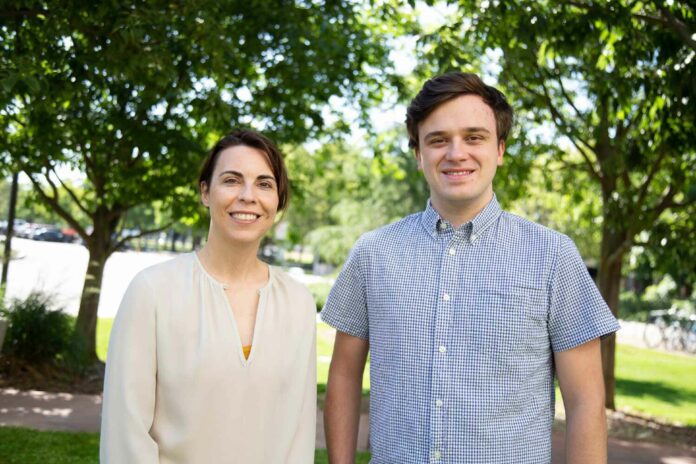Problem-solving algorithm created by Cole Williams contributes to more inclusive science
Since fifth grade, Cole Williams knew he had an interest in genetics and the relationship between biology, math and probability after first learning about Punnett squares. Williams, a class of 2019 genetics and genomics major, was able to further these interests at UC Davis through his classes and through his work in the lab of Associate Anthropology Professor Brenna Henn. He was recently named the 2019 Undergraduate of the Year by the UC Davis College of Biological Sciences.
“Not many schools offer genetics as a major, where you can focus solely on genetics,” Williams said. “UC Davis had so many classes that interested me, so it was a great place to study this.”
After working at another lab, Williams wanted to perform research more closely related to genetics and genomics and, at the start of the Winter Quarter of his third year, Williams began working at Dr. Henn’s lab, where he could do just that. Here, he was able to write an algorithm that allowed researchers to distinguish between complex familial relationships in genetic datasets of Africans.
In Dr. Henn’s lab, researchers study populations from southern Africa and neighboring countries to solve questions about human evolution and disease. According to Williams, these populations are some of the most genetically diverse in the world, yet some of the least studied.
“The lab uses genetics to study the genetics of complex traits, like skin color, disease susceptibility, tuberculosis … and demographic history of the region,” Williams said.
Limited genetic information is known about non-European individuals, as the majority of knowledge about human diseases comes from data sets with large proportions of European individuals. Seventy-eight percent of individuals in “genome-wide association studies” are of European descent, according to an article published in Cell, however, according to the U.N., Europeans make up only about 10% of the world’s population.
“Not a lot is known about non-European populations and there is a tremendous amount of information we can learn from these populations,” Williams said.
In Williams’ project, he worked with a dataset from the Himba population of Northern Namibia and was tasked with constructing pedigrees using genetic data alone. His goal was to study tuberculosis susceptibility and the inheritance of traits in a family context, as well as understand family structure and mating practices in the population.
The Himba population has unique attributes including a complex mating system where both men and women have partners outside of their marriage. This results in complicated family trees of multiple half relatives. Additionally, mating between first cousins in this population is preferable, resulting in an inbred population, according to Williams. These factors made constructing the pedigrees difficult for Williams because most algorithms have been designed and developed using outbred northern European datasets, which are incapable of factoring in the Himba database’s complexities.
Previously used algorithms cannot decipher between relationships where individuals share a quarter of the same DNA, such as grandparent-grandchildren, half-siblings and avuncular relationships — those between uncles and aunts and their nieces and nephews — without external information. According to Williams, this is because algorithms review the genome in terms of the proportion of the genome that is identical by descent.
“I tested these algorithms, and they didn’t work at all because of these problems, so I decided to write my own algorithm that dealt with these populations better,” Williams said.
Williams’ algorithm looks at identical by descent segments instead of proportions since they are more informative. Through this algorithm, Williams can decipher between the differences in segments between different familial relationships. Through this discovery, he was able to create a pedigree for the Himba population.
“Being able to distinguish the relations, that’s been a problem in genetics for a really long time,” Williams said. “My algorithm solves that problem. The way the future is going, it is important that we can build these family trees so we can study disease in the context of families and not as the population as a whole, so we can better understand how these traits and diseases work.”
Williams’ academic performance, in addition to his volunteer work as a counselor at Camp Kesem, a student run organization for children with parents affected by cancer, was taken into consideration in his selection as 2019 Undergraduate of the Year by the College of Biological Sciences.
“Camp Kesem was a really huge part of my time at UC Davis,” Williams said.
Currently, Williams works as a research assistant at the Colorado Center for Personalized Medicine at the University of Colorado Anschutz Medical School. He is working to rewrite and improve his algorithm in order to be able to apply it to more outbred populations and larger datasets.
“I’m continuing what I was doing and learning more about disease in non-European individuals,” Williams said.
Written by: Margo Rosenbaum — science@theaggie.org





